Information Systems Design Goals of this course






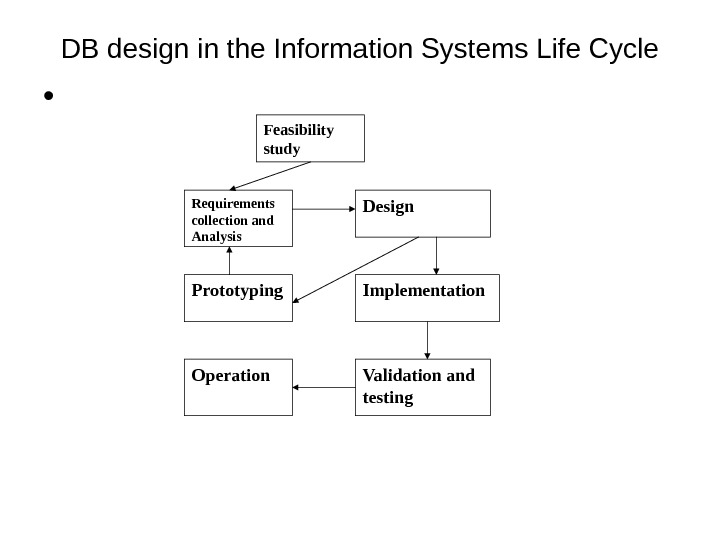





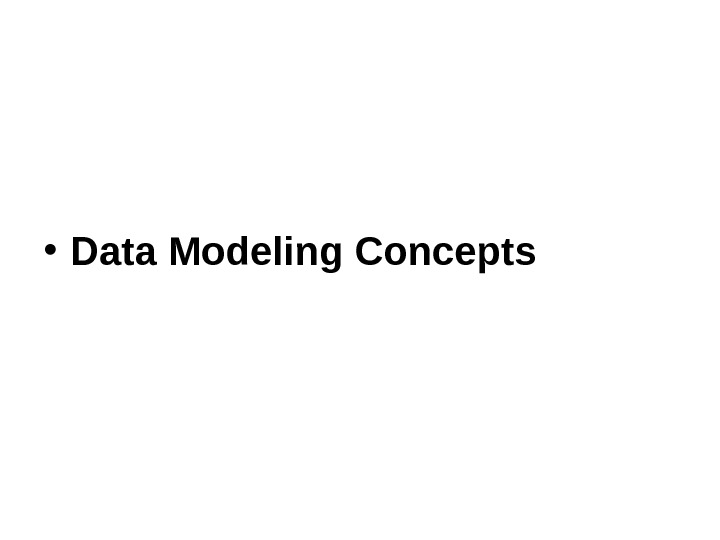







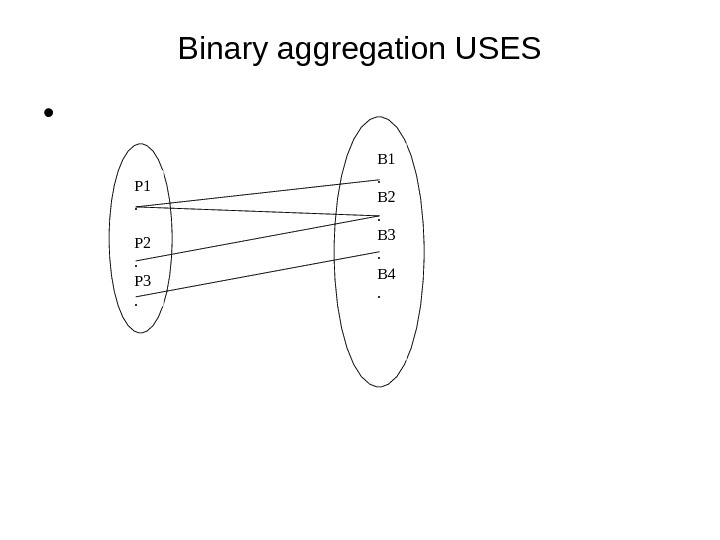





















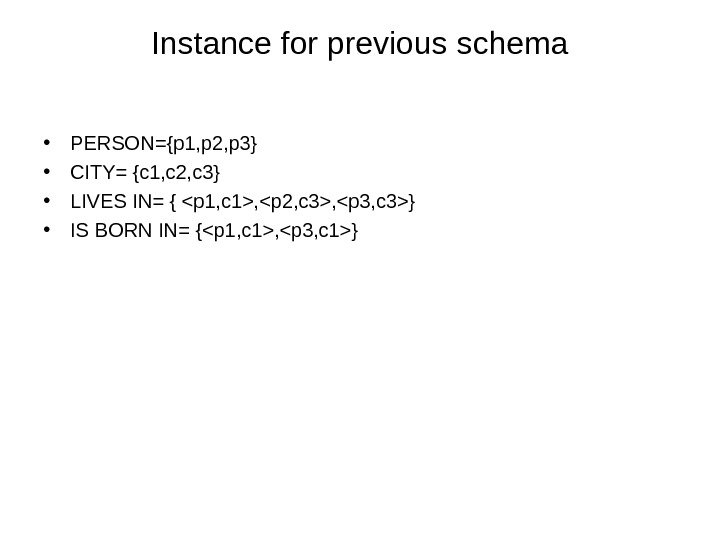






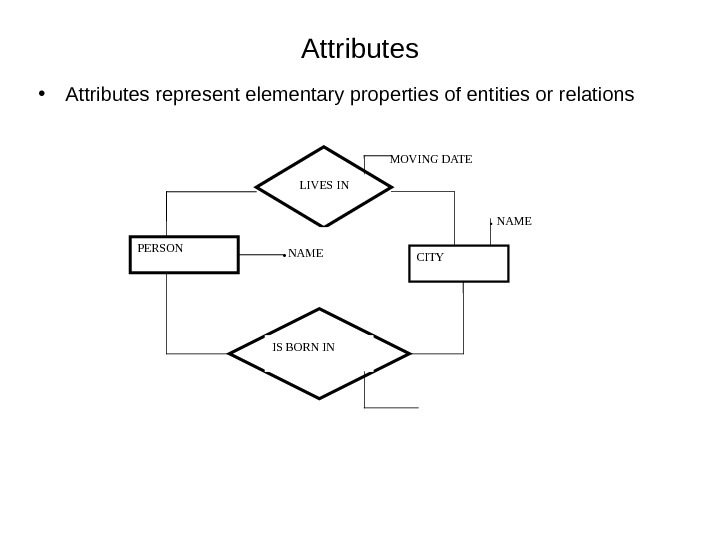



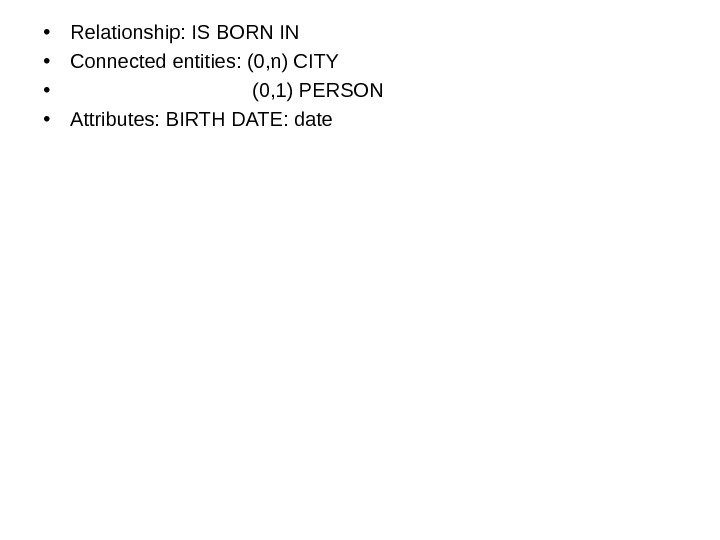

















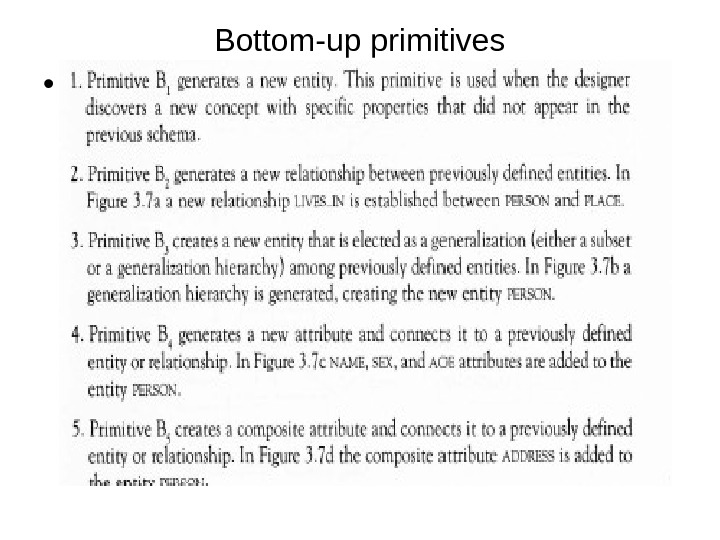






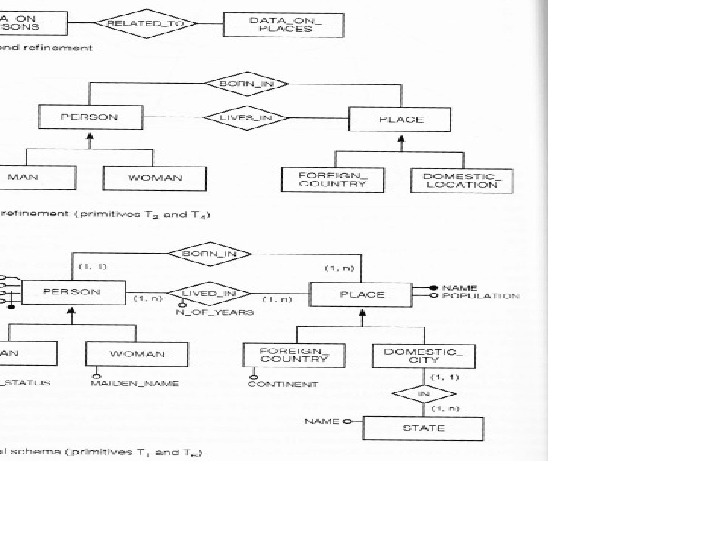






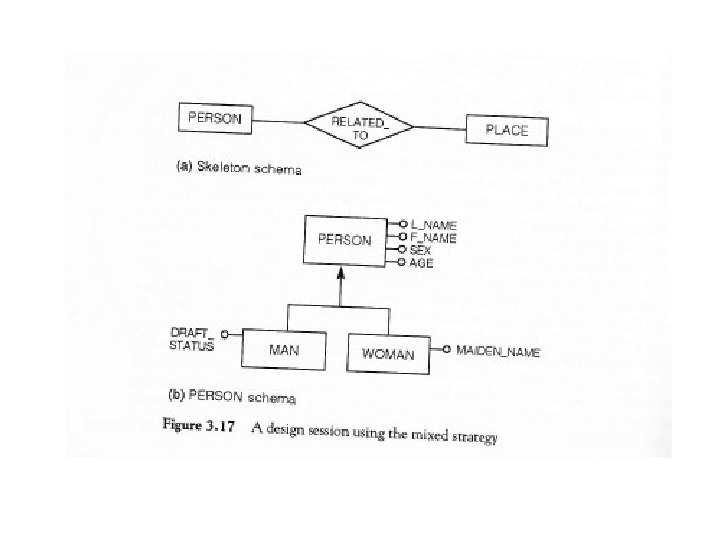









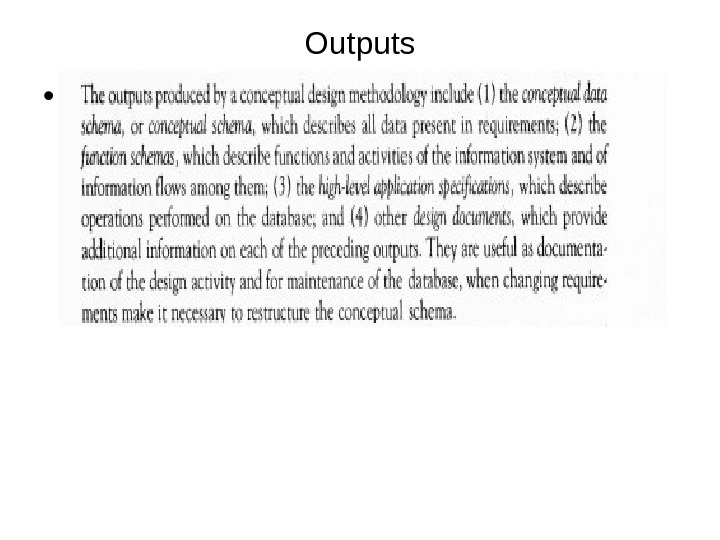

- Размер: 3.1 Mегабайта
- Количество слайдов: 96
Описание презентации Information Systems Design Goals of this course по слайдам
 Information Systems Design
Information Systems Design
 Goals of this course • To provide f thorough and systematic treatment of conceptual and logical design • To base this treatment on the Entity-Relation model • To advocate that conceptual design and function anslysis be conducted together • To address completely the translation of conceptual design in ER model in the three popular data models- relational, network, hierarhical, and vice versa • To illustrate the concepts via realistic large case study • To provide a survey of state of art of design tools • To provide enough support for students in terms of exercises and bibliographic notes
Goals of this course • To provide f thorough and systematic treatment of conceptual and logical design • To base this treatment on the Entity-Relation model • To advocate that conceptual design and function anslysis be conducted together • To address completely the translation of conceptual design in ER model in the three popular data models- relational, network, hierarhical, and vice versa • To illustrate the concepts via realistic large case study • To provide a survey of state of art of design tools • To provide enough support for students in terms of exercises and bibliographic notes
 Conceptual DB Design 1. Introduction to database design 2. Data modeling concepts 3. Metodologies for conceptual design 4. View design 5. View integration 6 Improving the Quality of Data base Schema 7. Schema Documentation and Maintenance Conceptual Database Design
Conceptual DB Design 1. Introduction to database design 2. Data modeling concepts 3. Metodologies for conceptual design 4. View design 5. View integration 6 Improving the Quality of Data base Schema 7. Schema Documentation and Maintenance Conceptual Database Design
 Functional Analysis for DB Design 8 Functional Analysis 9 Joint Data and Functional Analysis 10. Case Study. Conceptual Data Design Functional analysis for Data Design
Functional Analysis for DB Design 8 Functional Analysis 9 Joint Data and Functional Analysis 10. Case Study. Conceptual Data Design Functional analysis for Data Design
 Logical Design and Data Tools • 11 High-Level Logical Design Using ER model 12 Logical Design for Relational Model 13. Logical Design for Network Model 14. Logical Design for hierarchical Model 15. DB Design Tools
Logical Design and Data Tools • 11 High-Level Logical Design Using ER model 12 Logical Design for Relational Model 13. Logical Design for Network Model 14. Logical Design for hierarchical Model 15. DB Design Tools
 DB design in the Information Systems Life Cycle • Feasibility study Requirements collection and Analysis Design Prototyping Implementation Validation and testing. Operation
DB design in the Information Systems Life Cycle • Feasibility study Requirements collection and Analysis Design Prototyping Implementation Validation and testing. Operation
 Phases of DB Design • Data requirements Conceptual Design Conceptual schema Logical Design Logical schema Physical Design Physical schema
Phases of DB Design • Data requirements Conceptual Design Conceptual schema Logical Design Logical schema Physical Design Physical schema
 Function driven approach to information system design • Application requirements Functional Analysis Functional schemas High level application Design Application specifications Application program design Detailed program specifications
Function driven approach to information system design • Application requirements Functional Analysis Functional schemas High level application Design Application specifications Application program design Detailed program specifications
 Dependence of DB design phases on the class of DBMS • Dependence on DBMS Class Specific DBMS Conceptual design No N o Logical design Yes No Physical design Yes
Dependence of DB design phases on the class of DBMS • Dependence on DBMS Class Specific DBMS Conceptual design No N o Logical design Yes No Physical design Yes
 Joint data- and function- driven approach to information systems design • Data and application requirements Conceptual Design Functional Analysis Conceptual schema Functional schemas
Joint data- and function- driven approach to information systems design • Data and application requirements Conceptual Design Functional Analysis Conceptual schema Functional schemas
 Bibliography • 1. W. Davis System Analysis and Design : A structured Approach. Addison-Wesley 1983 • 2. R. Farley Software engineering Concepts. Vc. Graw Hills 1985 • 3. A. Cardenas Data Base Management System. 2 ed. Allyn and Bacon
Bibliography • 1. W. Davis System Analysis and Design : A structured Approach. Addison-Wesley 1983 • 2. R. Farley Software engineering Concepts. Vc. Graw Hills 1985 • 3. A. Cardenas Data Base Management System. 2 ed. Allyn and Bacon
 • Data Modeling Concepts
• Data Modeling Concepts
 Structure of the lecture • Section 1 — Abstractions • Section 2 — Properties of mapping • Section 3 — Data models, Schemas, Instances of DB • Section 4 — ER Model • Section 5 — How to read an ER-schema
Structure of the lecture • Section 1 — Abstractions • Section 2 — Properties of mapping • Section 3 — Data models, Schemas, Instances of DB • Section 4 — ER Model • Section 5 — How to read an ER-schema
 Abstractions in Conceptual Data Design •
Abstractions in Conceptual Data Design •
 Classification Abstraction • Month January February … December
Classification Abstraction • Month January February … December
 • The Classification Abstraction is used for defining as class of real world objects characterized by common properties • One level tree having as its root class • A Node leaf is a member of root class • {black chair, Black table, White chair, White table} Table Chair Black Furniture White Furniture Black Table White Table Black Chair White Chair
• The Classification Abstraction is used for defining as class of real world objects characterized by common properties • One level tree having as its root class • A Node leaf is a member of root class • {black chair, Black table, White chair, White table} Table Chair Black Furniture White Furniture Black Table White Table Black Chair White Chair
 Aggregation Abstraction • Aggregation abstraction defines a new class from set of (other) classes that representits component parts • Leaf IS PART OF root class (is A) Bicycle Wheel Pedal Hendle. Bar
Aggregation Abstraction • Aggregation abstraction defines a new class from set of (other) classes that representits component parts • Leaf IS PART OF root class (is A) Bicycle Wheel Pedal Hendle. Bar
 Generalization Abstraction • A generalization abstraction defines a subset relationship between the elements of two or more classes In generalization all the abstractions defined for the generic class are inherited by all the subset classes Person Man Woman
Generalization Abstraction • A generalization abstraction defines a subset relationship between the elements of two or more classes In generalization all the abstractions defined for the generic class are inherited by all the subset classes Person Man Woman
 Properties of Mapping • A Binary aggregation is a mapping established between two classes. Uses Owns Person Building
Properties of Mapping • A Binary aggregation is a mapping established between two classes. Uses Owns Person Building
 Binary aggregation USES • P 1. P 2. P 3. B 1. B 2. B 3. B 4.
Binary aggregation USES • P 1. P 2. P 3. B 1. B 2. B 3. B 4.
 Binary aggregation OWNS • P 1. P 2. P 3. B 1. B 2. B 3. B 4.
Binary aggregation OWNS • P 1. P 2. P 3. B 1. B 2. B 3. B 4.
 Binary aggregation OWNS P 1. P 2. P 3. B 1. B 2. B 3. B 4.
Binary aggregation OWNS P 1. P 2. P 3. B 1. B 2. B 3. B 4.
 Minimal cardinality (min-card) • Let us consider aggregation A between classes C 1 and C 2 The minimal cardinality or min-card of C 1 in A denoted min-card(C 1, A), is the minimum number of mappings in which every element of C 1 can participate. Similarly, the min-card of C 2 in A, denoted min-card(C 2, A), is the minimum number of mappings in which each element of C 2 can participate
Minimal cardinality (min-card) • Let us consider aggregation A between classes C 1 and C 2 The minimal cardinality or min-card of C 1 in A denoted min-card(C 1, A), is the minimum number of mappings in which every element of C 1 can participate. Similarly, the min-card of C 2 in A, denoted min-card(C 2, A), is the minimum number of mappings in which each element of C 2 can participate
 Maximal Cardinality • Let us consider aggregation A between classes C 1 and C 2 The maximal cardinality or max-card of C 1 in A denoted max-card(C 1, A), is the maximum number of mappings in which every element of C 1 can participate. Similarly, the max-card of C 2 in A, denoted max-card(C 2, A), is the maximum number of mappings in which each element of C 2 can participate
Maximal Cardinality • Let us consider aggregation A between classes C 1 and C 2 The maximal cardinality or max-card of C 1 in A denoted max-card(C 1, A), is the maximum number of mappings in which every element of C 1 can participate. Similarly, the max-card of C 2 in A, denoted max-card(C 2, A), is the maximum number of mappings in which each element of C 2 can participate
 One –to-one mapping • If max-card(C 1, A)=1 and max-card(C 2, A)=1 then we say that the aggregation is ONE-TO-ONE. . C 1. . .
One –to-one mapping • If max-card(C 1, A)=1 and max-card(C 2, A)=1 then we say that the aggregation is ONE-TO-ONE. . C 1. . .
 One to many mapping • If max-card(C 1, A)=n and max-card(C 2, A)=1 then we say that the aggregation is ONE-TO-MANY. . C 1. . .
One to many mapping • If max-card(C 1, A)=n and max-card(C 2, A)=1 then we say that the aggregation is ONE-TO-MANY. . C 1. . .
 Many –to –one mapping • If max-card(C 1, A)=1 and max-card(C 2, A)=n then we say that the aggregation is MANY -TO-ONE. . C 1. . .
Many –to –one mapping • If max-card(C 1, A)=1 and max-card(C 2, A)=n then we say that the aggregation is MANY -TO-ONE. . C 1. . .
 Many –to-many mapping • If max-card(C 1, A)=m and max-card(C 2, A)=n ( m, n>1), then we say that the aggregation is MANY -TO-MANY. . C 1. . .
Many –to-many mapping • If max-card(C 1, A)=m and max-card(C 2, A)=n ( m, n>1), then we say that the aggregation is MANY -TO-MANY. . C 1. . .
 N-ary aggregation • An n-ary aggregation is a mapping established among three or more classes • Minimal Cardinality ( min-card) Let us consider the aggregation A between classes C 1, C 2, …, Cn The min-card of Ci in A is minimal number of mappings in which each element of Ci can participate • Maximal Cardinality ( max-card) Let us consider the aggregation A between classes C 1, C 2, …, Cn. The max-card of Ci in A is maximum number of mappings, in which each element of Ci can participate • The two values of minimal and maximal cardinality completly characterize each participation of one class in aggregation
N-ary aggregation • An n-ary aggregation is a mapping established among three or more classes • Minimal Cardinality ( min-card) Let us consider the aggregation A between classes C 1, C 2, …, Cn The min-card of Ci in A is minimal number of mappings in which each element of Ci can participate • Maximal Cardinality ( max-card) Let us consider the aggregation A between classes C 1, C 2, …, Cn. The max-card of Ci in A is maximum number of mappings, in which each element of Ci can participate • The two values of minimal and maximal cardinality completly characterize each participation of one class in aggregation
 Representation of ternary aggregation Meets • CS 47 . EE 01 . . ter. skil. . MON. TUE. WED. THU. FRI
Representation of ternary aggregation Meets • CS 47 . EE 01 . . ter. skil. . MON. TUE. WED. THU. FRI
 Generalization • A Generalization Abstraction establishes the mapping from generic class to the subset class Person Male Female Total, Exclusive
Generalization • A Generalization Abstraction establishes the mapping from generic class to the subset class Person Male Female Total, Exclusive
 Partial, overlapping generalization • Person Male Partial, Overlapping Empl Unimpl
Partial, overlapping generalization • Person Male Partial, Overlapping Empl Unimpl
 Partial, Exclusive Generalization • Vehicle Car Partial, Exclusive Bicycle
Partial, Exclusive Generalization • Vehicle Car Partial, Exclusive Bicycle
 Total, overlapping generalization • Player Soccer player Total, Overlapping Tennis player
Total, overlapping generalization • Player Soccer player Total, Overlapping Tennis player
 Data models • A Data model is a collection of concepts that can be used to describe a set of data and operations to manipulate the data. • When a data model describes a set of concepts from a given reality, It is called a conceptual data model The Concepts in data model are typically by using abstraction mechanisms and are described through linguistic and graphic representations. Syntax can be defined fnd a graphical notation can be developed as parts of data model. Conceptual model is tool for representing reality at high level of abstraction Logical models support data descriptions that can be processed by computer. They include hierarchical, network, relational models These models to phisical structure of database
Data models • A Data model is a collection of concepts that can be used to describe a set of data and operations to manipulate the data. • When a data model describes a set of concepts from a given reality, It is called a conceptual data model The Concepts in data model are typically by using abstraction mechanisms and are described through linguistic and graphic representations. Syntax can be defined fnd a graphical notation can be developed as parts of data model. Conceptual model is tool for representing reality at high level of abstraction Logical models support data descriptions that can be processed by computer. They include hierarchical, network, relational models These models to phisical structure of database
 Schema • Schema is a representation of a specific portion of reality, built using a particular data model • Schema is static, time – invariant collection of linguistic or graphic representations that describe the structure of data of interest such as what within one organization Person NAME SEX ADDRESS SOCIAL SECURITY NUMBER Car PLATE MAKE COLOUR SOCIAL SECURITY NUMBER PLATE SAMPLE SCHEM
Schema • Schema is a representation of a specific portion of reality, built using a particular data model • Schema is static, time – invariant collection of linguistic or graphic representations that describe the structure of data of interest such as what within one organization Person NAME SEX ADDRESS SOCIAL SECURITY NUMBER Car PLATE MAKE COLOUR SOCIAL SECURITY NUMBER PLATE SAMPLE SCHEM
 Instances • An instance of schema is a dynamic, time variant collection of data that conforms to the structure of data defined by the schema • Sample instance • PERSON • JOHN SMITHM 11 WEST 12. , FT. LAUDERDALE 387 -6713 -362 • MARY SMITHF 11 WEST 12. , FT. LAUDERDALE 389 -4816 -381 • JOHN DOLEM 11 RAMONA ST. PAOLO ALTO 391 -3873 -132 • CAR • CA 13718 MASERATI WHITE • FL 18 MIAI PORSCHE BLUE • CA CATA 17 DATSUN WHITE • FL 171899 FORD RED • OWNS • 387 -6713 -362 FL 18 MIAI • 387 -6713 -362 FL 171899 • 391 -3873 -132 CA 13718 • 391 -3873 -132 CA CATA 17 • Sample instance after insertion • CAR • CA 13718 MASERATI WHITE • FL 18 MIAI PORSCHE BLUE • CA CATA 17 DATSUN WHITE • FL 171899 FORD RED • NY BABYBLUE FERRARI RED • OWNS • 387 -6713 -362 FL 18 MIAI • 387 -6713 -362 FL 171899 • 391 -23873 -132 CA 13718 • 391 -32873 -132 CA CATA 17 • 389 -4816 -381 NY BABYBLU
Instances • An instance of schema is a dynamic, time variant collection of data that conforms to the structure of data defined by the schema • Sample instance • PERSON • JOHN SMITHM 11 WEST 12. , FT. LAUDERDALE 387 -6713 -362 • MARY SMITHF 11 WEST 12. , FT. LAUDERDALE 389 -4816 -381 • JOHN DOLEM 11 RAMONA ST. PAOLO ALTO 391 -3873 -132 • CAR • CA 13718 MASERATI WHITE • FL 18 MIAI PORSCHE BLUE • CA CATA 17 DATSUN WHITE • FL 171899 FORD RED • OWNS • 387 -6713 -362 FL 18 MIAI • 387 -6713 -362 FL 171899 • 391 -3873 -132 CA 13718 • 391 -3873 -132 CA CATA 17 • Sample instance after insertion • CAR • CA 13718 MASERATI WHITE • FL 18 MIAI PORSCHE BLUE • CA CATA 17 DATSUN WHITE • FL 171899 FORD RED • NY BABYBLUE FERRARI RED • OWNS • 387 -6713 -362 FL 18 MIAI • 387 -6713 -362 FL 171899 • 391 -23873 -132 CA 13718 • 391 -32873 -132 CA CATA 17 • 389 -4816 -381 NY BABYBLU
 Relationships between model, schema, instance • Model Schema Instance Model provides rules for structuring data Schema provides rules for verifying that an instance is valid. Perception of the structure of reality Description of reality at a given point in time
Relationships between model, schema, instance • Model Schema Instance Model provides rules for structuring data Schema provides rules for verifying that an instance is valid. Perception of the structure of reality Description of reality at a given point in time
 Qualities of Conceptual Models • 1. Expressiveness • 2. Simplicity • 3. Minimality • 4. Formality • PROPERTIES OF GRAPHIC REPRESENTATIONS • 1. Graphic Completeness • 2. Ease of Reading
Qualities of Conceptual Models • 1. Expressiveness • 2. Simplicity • 3. Minimality • 4. Formality • PROPERTIES OF GRAPHIC REPRESENTATIONS • 1. Graphic Completeness • 2. Ease of Reading
 The Entity –Relationship Model • Basic elements of the ER Model • Entities represent classes of real world objects • Relationships aggregation of two or more entities • Binary and n-ary relationships • Rings – are binary relationships connecting an entity to itself ( recursive relationships )
The Entity –Relationship Model • Basic elements of the ER Model • Entities represent classes of real world objects • Relationships aggregation of two or more entities • Binary and n-ary relationships • Rings – are binary relationships connecting an entity to itself ( recursive relationships )
 • Portion of ER-schema representing entities PERSON, CITY and relationships IS BORN IN and LIVES IN PERSON CITYLIVES IS BORN IN
• Portion of ER-schema representing entities PERSON, CITY and relationships IS BORN IN and LIVES IN PERSON CITYLIVES IS BORN IN
 Instance for previous schema • PERSON={p 1, p 2, p 3} • CITY= {c 1, c 2, c 3} • LIVES IN= {
Instance for previous schema • PERSON={p 1, p 2, p 3} • CITY= {c 1, c 2, c 3} • LIVES IN= {
,
,
} • IS BORN IN= {
,
}
 N-ary relationship MEETS • COURSE MEETS CLASSROOM DAY
N-ary relationship MEETS • COURSE MEETS CLASSROOM DAY
 Relationship MEETS • COURSE MEETS CLASSROOM DAY(1, 3) (0, 40) (0, n)
Relationship MEETS • COURSE MEETS CLASSROOM DAY(1, 3) (0, 40) (0, n)
 Relationship MANAGES • Employee Manages. Manager Of SUBORDINATE OF(0, n)
Relationship MANAGES • Employee Manages. Manager Of SUBORDINATE OF(0, n)
 • min-card( PERSON, LIVES IN)=1 • max-card( PERSON, LIVES IN)=1 • min-card( CITY, LIVES IN)=0 • max-card( CITY, LIVES IN)=n
• min-card( PERSON, LIVES IN)=1 • max-card( PERSON, LIVES IN)=1 • min-card( CITY, LIVES IN)=0 • max-card( CITY, LIVES IN)=n
 Relationship LIVES IN • PERSON (1, 1) LIVES IN CITY(0, n)
Relationship LIVES IN • PERSON (1, 1) LIVES IN CITY(0, n)
 Ring relationship MANAGES • Employee Manages. Manager Of SUBORDINATE O
Ring relationship MANAGES • Employee Manages. Manager Of SUBORDINATE O
 Attributes • Attributes represent elementary properties of entities or relations PERSON CITYLIVES IN IS BORN IN MOVING DATE. NAM
Attributes • Attributes represent elementary properties of entities or relations PERSON CITYLIVES IN IS BORN IN MOVING DATE. NAM
 An ER schema with entities, rela tionships, attributs • NAME SOCIAL SECURITY NUMBER PROFESSION (0, n) DEGREE (0, n) NAME ELEVATION NUMBER OF INHABITANTSBIRTH DATE LIVES IN IS BORN IN CITY(0, n)MOVING DATE PERSON (0, 1)
An ER schema with entities, rela tionships, attributs • NAME SOCIAL SECURITY NUMBER PROFESSION (0, n) DEGREE (0, n) NAME ELEVATION NUMBER OF INHABITANTSBIRTH DATE LIVES IN IS BORN IN CITY(0, n)MOVING DATE PERSON (0, 1)
 An example of instance of DB schema PERSON={p 1: , p 2: P 3: } CITY={c 1: , c 2: , c 3: } LIVES IN={<p 1, c 1: >, <p 2, c 3: > <p 3, c 3: >} IS BORN IN={<p 1, c 1: > <p 3, c 1: >}
An example of instance of DB schema PERSON={p 1: , p 2: P 3: } CITY={c 1: , c 2: , c 3: } LIVES IN={<p 1, c 1: >, <p 2, c 3: > <p 3, c 3: >} IS BORN IN={<p 1, c 1: > <p 3, c 1: >}
 Schema PERSONNEL • Schema : PERSONNEL • Entity: PERSON • Attributes: NAME: text (50) • SOCIAL SECURITY NUMBER: text (12) • PROFESSION: text (20) • (0, n) DEGREE: text (20) • Entity: CITY • Attributes: NAME: text (30) • ELEVATION: integer • NUMBER OF INHABITANTS: integer • Relationship: LIVES IN • Connected entities: (0, n) CITY • (1, 1) PERSON • Attributes: MOVING DATE: date
Schema PERSONNEL • Schema : PERSONNEL • Entity: PERSON • Attributes: NAME: text (50) • SOCIAL SECURITY NUMBER: text (12) • PROFESSION: text (20) • (0, n) DEGREE: text (20) • Entity: CITY • Attributes: NAME: text (30) • ELEVATION: integer • NUMBER OF INHABITANTS: integer • Relationship: LIVES IN • Connected entities: (0, n) CITY • (1, 1) PERSON • Attributes: MOVING DATE: date
 • Relationship: IS BORN IN • Connected entities: (0, n) CITY • (0, 1) PERSON • Attributes: BIRTH DATE: date
• Relationship: IS BORN IN • Connected entities: (0, n) CITY • (0, 1) PERSON • Attributes: BIRTH DATE: date
 Generalization Hierarchies • In the ER model it is possible to establish generalization hierarchies between entities • An entity E is generalization of a group of entities E 1, E 2, …, En if each object of classes E 1, E 2, …, En is also object of class E E 1 E 2 En
Generalization Hierarchies • In the ER model it is possible to establish generalization hierarchies between entities • An entity E is generalization of a group of entities E 1, E 2, …, En if each object of classes E 1, E 2, …, En is also object of class E E 1 E 2 En
 COVERAGE: • Total generalization (t) • Partial generalization (p) • Exclusive (e) • Overlapping (o) Pair: (t, e) the most frequently used
COVERAGE: • Total generalization (t) • Partial generalization (p) • Exclusive (e) • Overlapping (o) Pair: (t, e) the most frequently used
 Generalization hierarchy for entity PERSON • (p, 0) PERSON MALE FEMALE MANAGER SECRETARY EMPLOYEE TECHNICAL MANAGER ADMIN. MANAGER PROGRA MMER SALES EMPLOY ADVERTISING EMPLOYEE(t, e) (p, 0)
Generalization hierarchy for entity PERSON • (p, 0) PERSON MALE FEMALE MANAGER SECRETARY EMPLOYEE TECHNICAL MANAGER ADMIN. MANAGER PROGRA MMER SALES EMPLOY ADVERTISING EMPLOYEE(t, e) (p, 0)
 Inheritance • All the properties of the generic entity are inherited by the subset elements PERSON NAME ADDRESS DRAFT STATUS MALE FEMALE NAME ADDRESS MAIDEN NAME Incorrect representation
Inheritance • All the properties of the generic entity are inherited by the subset elements PERSON NAME ADDRESS DRAFT STATUS MALE FEMALE NAME ADDRESS MAIDEN NAME Incorrect representation
 • PERSON ADDRESS NAME DRAFT STATUS MALE FEMALE Correct representation MAIDEN NAM
• PERSON ADDRESS NAME DRAFT STATUS MALE FEMALE Correct representation MAIDEN NAM
 Formal definition of Inheritance • Let E be an entity. Let A 1, A 2, …, An be single valued, mandatory attributes of E. Let E 1, E 2, …, En be other entities connected to E by mandatory, one –to-one or many-to-one binary relationships R 1, R 2, …, Rn ( i. e. • min-card(E, Ri)=1)) Consider as a possible identifier the set I= {A 1, …, An, E 1, …, Em}, 0 ≤n, 0 ≤m, 1 ≤n+m • The value of the identifier for a particular entity instance is defined as the collection of all values of attributes A 1, . . , An and all instances of entities Ej, • j=1, …, m connected to e with i ≤n, j <m • Because of the assumption of considering mandatory single- valued attributes or mandatory relationships with max-card set to each instance of E is mapped either to one value of attributes Ai or to one instance of entity Ej, i ≤n, j ≤m
Formal definition of Inheritance • Let E be an entity. Let A 1, A 2, …, An be single valued, mandatory attributes of E. Let E 1, E 2, …, En be other entities connected to E by mandatory, one –to-one or many-to-one binary relationships R 1, R 2, …, Rn ( i. e. • min-card(E, Ri)=1)) Consider as a possible identifier the set I= {A 1, …, An, E 1, …, Em}, 0 ≤n, 0 ≤m, 1 ≤n+m • The value of the identifier for a particular entity instance is defined as the collection of all values of attributes A 1, . . , An and all instances of entities Ej, • j=1, …, m connected to e with i ≤n, j <m • Because of the assumption of considering mandatory single- valued attributes or mandatory relationships with max-card set to each instance of E is mapped either to one value of attributes Ai or to one instance of entity Ej, i ≤n, j ≤m
 Exammpe of schema transformation •
Exammpe of schema transformation •
 • Each schema TRANSFORMATION has a starting schema and a resulting schema • Each SCHEMA TRANSFORMATION maps names of concepts in starting schema to names of concepts in resulting schema. • Concepts in the resulting schema must inherit all logical connections in the starting schema
• Each schema TRANSFORMATION has a starting schema and a resulting schema • Each SCHEMA TRANSFORMATION maps names of concepts in starting schema to names of concepts in resulting schema. • Concepts in the resulting schema must inherit all logical connections in the starting schema
 Properties of top –down primitives • They have a simple structure: the starting schema is a single concept, the resulting schema consists of small set of concepts. • All names are refined into new names describing the original concept in the lower abstraction level • Logical connections should be inherited by the single concept of the resulting schema
Properties of top –down primitives • They have a simple structure: the starting schema is a single concept, the resulting schema consists of small set of concepts. • All names are refined into new names describing the original concept in the lower abstraction level • Logical connections should be inherited by the single concept of the resulting schema
 Top –Down Primitives •
Top –Down Primitives •


 Application of top-down primitives
Application of top-down primitives
 •
•


 Applying of complex top –down schema transformation •
Applying of complex top –down schema transformation •
 Bottom-up primitives •
Bottom-up primitives •
 •
•
 •
•
 •
•
 • Strategies for Schema Design
• Strategies for Schema Design
 Top-down strategy •
Top-down strategy •
 • In the top-down strategy schema is obtained applying pure top-down refinement primitives
• In the top-down strategy schema is obtained applying pure top-down refinement primitives
 •
•
 Bottom-Up strategy • In the bottom –up strategy we apply pure bottom –up primitives
Bottom-Up strategy • In the bottom –up strategy we apply pure bottom –up primitives
 •
•
 •
•
 Inside-out strategy • This strategy is a special type of bottom –up strategy Here we fix the most important or evident concepts and then proceed by moving as oil stain does finding first the concepts that are conceptually close to starting concepts and then navigate to more distant ones
Inside-out strategy • This strategy is a special type of bottom –up strategy Here we fix the most important or evident concepts and then proceed by moving as oil stain does finding first the concepts that are conceptually close to starting concepts and then navigate to more distant ones
 •
•
 Mixed strategy
Mixed strategy

 •
•
 •
•
 Criteria for Choosing among Concepts •
Criteria for Choosing among Concepts •
 Entity vs. Simple attribute
Entity vs. Simple attribute
 Generalization vs. attribute • Generalization will be used when we expect that some property will be associated to the lower level
Generalization vs. attribute • Generalization will be used when we expect that some property will be associated to the lower level
 Composite attribute vs set of simple attributes
Composite attribute vs set of simple attributes
 Inputs, outputs and activities of conceptual design •
Inputs, outputs and activities of conceptual design •
 •
•
 •
•
 Outputs •
Outputs •
 Activities •
Activities •

